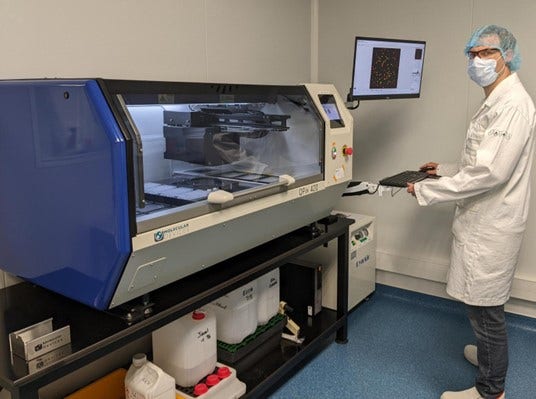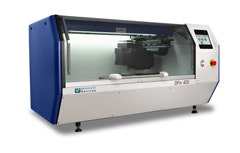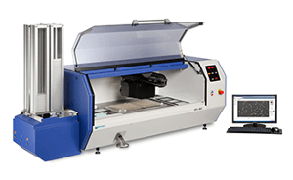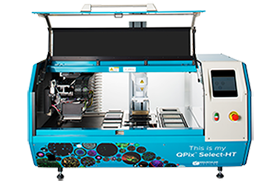
Fermentalg® uses QPix® 420 colony picker to leverage microalgae metabolism to produce natural food dyes
COMPANY/UNIVERSITY
Fermentalg
TEAM MEMBERS
Audrey S. Commault, PhD - Senior Scientist
Rodrigo Rangel, PhD - R&D Director
Julien Demol, M. Sc. - Engineer
PRODUCTS USED
QPix 420 Microbial Colony Pickers
The Challenge

The Solution
Recognising the need for a time-saving and labor-efficient method, Fermentalg made a groundbreaking decision to equip its laboratories with a high throughput screening platform. This platform enabled them to streamline their screening process and optimize their industrial strains effectively. A crucial component of this platform is the QPix 420 instrument, which revolutionized the colony picking step.

QPix 420 System

QPix 450/460 Systems

QPix Pins and Heads

QPix Microbial Colony Pickers

QPix Tips
Products Used
The QPix® 420 Microbial Colony Picker is a cutting-edge solution that leverages state-of-the-art technology to address bottlenecks in genetic library screening. With its precision robotics and intuitive software, it enables scientists to quickly, accurately, and efficiently screen through large libraries, saving time and increasing productivity.
More than just colony pickers, these systems enable scientists to:
- Automate workflows from sampling and spreading to picking.
- Pick the right colonies every time
- Efficiently manage large, diverse populations for: protein expression, biofuel research, enzyme evolution, phage display, DNA sequencing, library generation and management.
The Result
By adopting the QPix 420 instrument, Fermentalg achieved remarkable results. Previously, the colony picking process was performed manually, leading to significant time consumption and labor intensiveness. However, with the QPix 420 system, Fermentalg experienced significant time savings and a significant increase in their screening capacity.
Download the full Application Note now

Figure. Selection of Galdieria sulphuraria colonies in transmitted light (top) and fluorescence (bottom). Pickable colonies are displayed in yellow. Orange: colonies excluded according to selection criteria. Top right panel: selection criteria defined for accurate colony picking. The bottom image shows the fluorescence of G. sulphuraria colonies expressing different levels of C-phycocyanin. The Red filter pair (Ex/Em: 628/692) was used. Bottom right panel: fluorescence histogram displayed as Mean Intensity.
Enhanced Applications
Fermentalg now enjoys a wide range of applications with its high throughput screening platform. The platform enables the selection of mutants with improved production capacity of omega-3 and phycocyanin, a natural blue pigment stable at extreme pH and temperature conditions. Additionally, the platform allows Fermentalg to screen their extensive Fermentalg Culture Collection, which houses 2077 species of microalgae and marine bacteria, facilitating the discovery of innovative molecules.
According to Fermentalg scientists, the integration of the QPix 420 microbial colony picker has been transformative. It replaces the laborious manual picking method, which relied on sterile pipette tips or inoculation loops, with a high throughput system that can rapidly identify and select unique colonies based on morphological features and fluorescence markers.
Unprecedented Throughput
With the QPix 420 system in place, Fermentalg scientists now have an impressive throughput capability. On average, they can pick 1500 colonies per week, corresponding to approximately 30 plates. This substantial increase in efficiency and capacity far surpasses the maximum of 400 colonies per week that could be manually picked.
In conclusion, Fermentalg has successfully addressed its research challenges by implementing the high throughput screening platform and the QPix 420 instrument. These advancements have revolutionized their research capabilities, enabling efficient strain selection and discovery of innovative molecules. With a focus on human health, nutrition, and ecological transition, Fermentalg continues to make significant contributions to the field of microalgae research, promoting a healthier and more sustainable future for all.
Visit the Fermentalg website today to learn more- https://www.fermentalg.com/